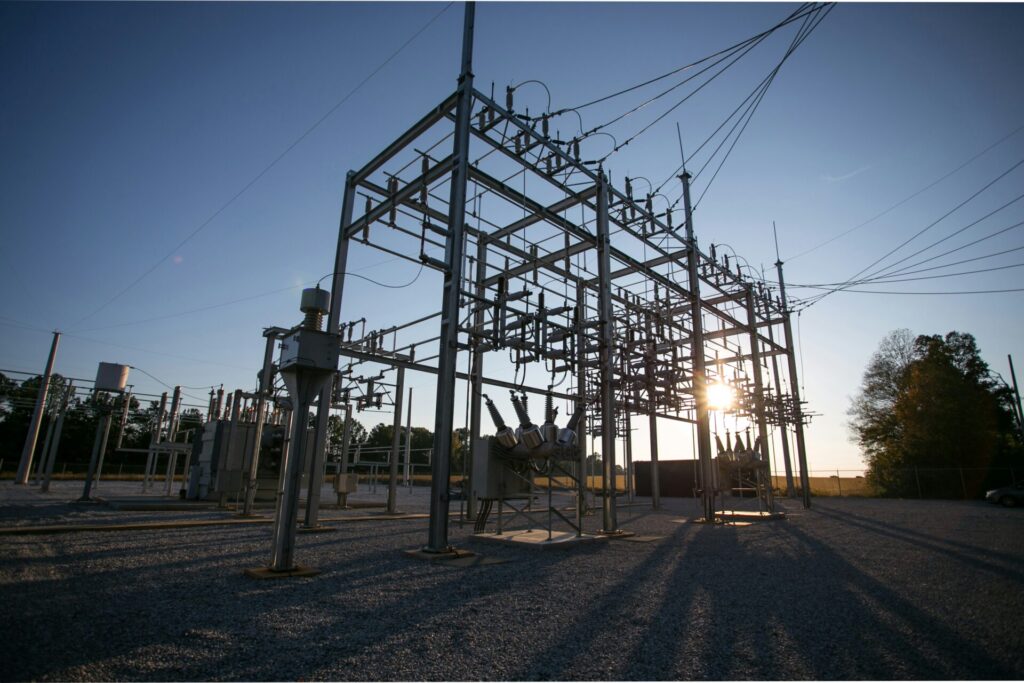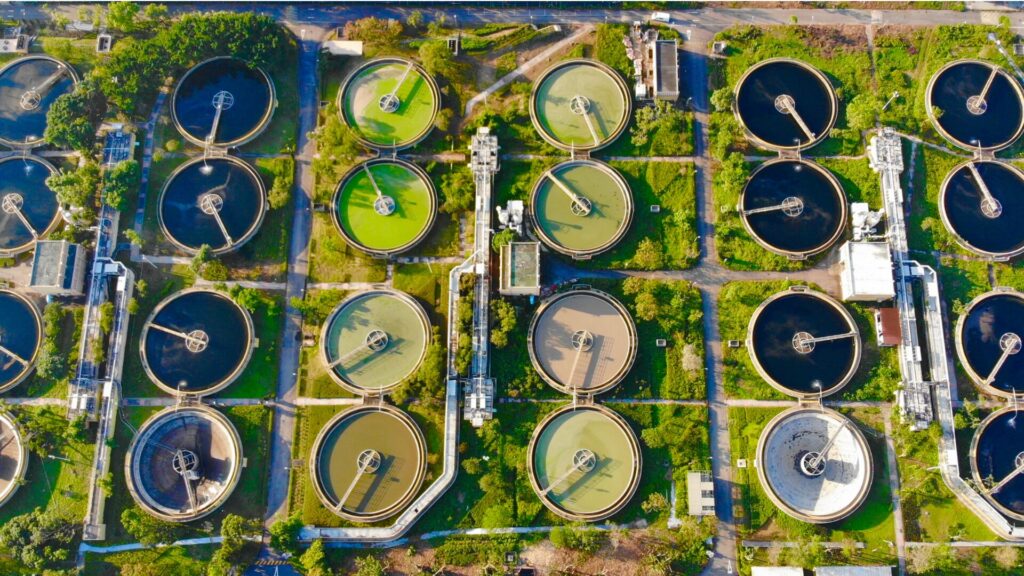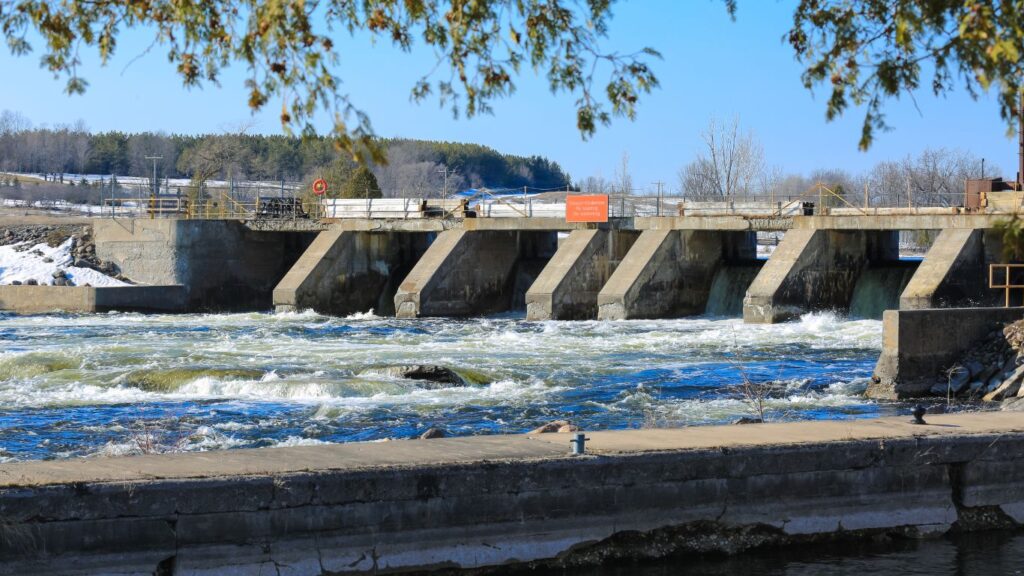Per- and polyfluoroalkyl substances (PFAS) are a collection of synthetic chemicals that have existed since the 1940s. They’re famous for their remarkable resistance to water and grease, so they’re often called “forever chemicals.” With thousands of different compounds, their incredibly strong carbon-fluorine bonds make them persist in the environment for an extended time. In this article, Transcend will break down the evolution and impact of PFAS regulations over the years while suggesting innovative technology to assist the affected industries.
Historical Context and Origins
PFAS were first developed in the mid-20th century during the post-war industrial boom. Companies like 3M and DuPont pioneered the use of PFAS in products like Teflon and Scotchgard, touting their remarkable resistance to heat, water, and oil. However, concerns about the environmental and health impacts of PFAS didn’t emerge until decades later, as these chemicals began to show up in water supplies, soils, and even human bloodstreams.
Types of PFAS
PFAS are categorized into several subgroups, with the most well-known being perfluorooctanoic acid (PFOA) and perfluorooctanesulfonic acid (PFOS). Other PFAS types include fluorinated telomers, perfluoroalkyl carboxylic acids (PFCAs), and perfluoroalkyl sulfonic acids (PFSAs).
Differences Between Various PFAS Compounds
PFAS compounds are a large and diverse group of synthetic chemicals characterized by carbon-fluorine bonds, which impart high stability and resistance to degradation. Despite sharing these common characteristics, PFAS chemicals differ significantly in their molecular structure, leading to variations in their physical and chemical properties, environmental persistence, toxicity, and uses.
- Chain Length: PFAS are categorized by carbon chain length: long-chain (e.g., PFOA, PFOS) and short-chain. Long-chain PFAS are more bioaccumulative and persistent, leading to stricter regulations. Short-chain PFAS are less bioaccumulative but still pose environmental risks.
- Functional Groups: PFAS varies by functional group. Perfluoroalkyl acids (PFAAs), like PFOA and PFOS, are linked to contamination and health concerns. Fluoropolymers, used in non-stick coatings, are large molecules with lower direct risks.
- Applications: Different structures lead to various uses, such as firefighting foams, water-repellent fabrics, and industrial processes like metal plating.
- Regulatory Challenges: The diversity of PFAS complicates regulation. Long-chain PFAS face stricter controls, while short-chain alternatives are under scrutiny. With over 4,000 PFAS compounds, comprehensive regulation is challenging, prompting a shift to group-based approaches.
Applications and Uses of PFAS
PFAS, known for their resilience and versatility, are extensively utilized in both industrial applications and consumer products, contributing to their pervasive presence in modern life.
Industrial Applications
PFAS are widely used in industries due to their unique properties. They are critical in the manufacture of non-stick cookware, waterproof clothing, firefighting foams, and electronics. In the aerospace and automotive industries, PFAS are used for their ability to withstand extreme conditions, enhancing product performance and durability.
Consumer Products Containing PFAS
Beyond industrial use, PFAS are found in a vast array of consumer products. From stain-resistant carpets and water-repellent outdoor gear to food packaging and cosmetics, these chemicals are integral to many products that require durability and resistance to moisture or heat. Their widespread use has contributed to the global challenge of PFAS contamination.
Health and Environmental Impacts
The health and environmental impacts of PFAS are profound and widespread, raising significant concerns among scientists, regulators, and the public to reduce PFAS exposure and protect human health.
Health Effects of PFAS Exposure
PFAS are known to accumulate in the human body over time, leading to potential health risks associated with both short-term and long-term exposure. These include:
- Short-Term Health Effects: Short-term exposure to high levels of PFAS has been associated with various health issues, including skin rashes, liver damage, and immune system effects. While these effects are concerning, they are less documented compared to long-term risks.
- Long-Term Health Risks: Chronic, low-level exposure to PFAS is more common and poses serious risks to human health. Epidemiological studies have linked long-term PFAS exposure to more serious health problems, including cancer, thyroid disorders, high cholesterol, and reproductive issues. The persistence of PFAS in the body, coupled with their ability to accumulate over time, makes them particularly dangerous.
Environmental Impact of PFAS
PFAS are often referred to as “forever chemicals” due to their extreme persistence in the environment.
PFAS in Soil and Water
Contamination is a significant environmental concern, especially in water sources across industries. These chemicals are highly mobile, often leaching into groundwater and spreading far from their original source. Unregulated contaminant monitoring rules of water bodies can lead to widespread ecological disruption, affecting aquatic life and, subsequently, the food chain.
Bioaccumulation and Ecological Consequences
PFAS tend to bioaccumulate, meaning they build up in the tissues of living organisms over time. This accumulation can lead to toxic effects on wildlife, including reproductive and developmental problems, and can disrupt entire ecosystems.
The Transcend Design Generator transforms the traditional approach to wastewater design with remarkable efficiency and precision. With the Transcend Design Generator, you can expect not only a faster design process but also superior outcomes that align with the latest standards in wastewater management.
Case Studies: PFAS Contamination Incidents
High-profile PFAS contamination incidents have exposed the widespread environmental and health risks associated with these chemicals, prompting legal action, regulatory scrutiny, and a reevaluation of preventive measures.
The Dark Waters of Parkersburg, WV
Dupont’s extensive use of PFOA (perfluorooctanoic acid) led to widespread contamination and significant health concerns among local residents. This case, documented in detail by reporter Nick Brumfield, has become a landmark example of corporate negligence and environmental harm.
The contamination, which began in the mid-20th century, was initially concealed by Dupont, despite mounting evidence linking PFOA to serious health issues such as cancer and liver damage. The coverup, driven by the company’s efforts to protect its profits and reputation, led to prolonged environmental degradation and personal suffering among affected communities.
Lessons Learned from These Incidents
The Dupont case underscores the critical need for transparency and accountability in environmental management. It also illustrates the broader implications of chemical contamination, urging a reevaluation of safety standards and regulatory measures to protect public health and the environment worldwide.
Regulatory Landscape
The regulatory landscape for PFAS is evolving globally, with countries adopting varied approaches to address the environmental and health risks posed by these persistent chemicals.
Global PFAS Regulations
Global PFAS regulations are diverse, reflecting varying levels of awareness and response, with some countries enforcing stringent controls while others are still developing their regulatory frameworks.
Overview of International Regulations
Countries around the world have begun to recognize the dangers of PFAS, leading to a patchwork of regulations. Some countries, like Sweden and Germany, have taken a stringent approach, while others are still in the early stages of regulation.
Comparison of Regulatory Approaches by Country
Regulatory approaches vary widely. The European Union (EU) has implemented some of the strictest controls, including restrictions on the use of certain PFAS in consumer products. In contrast, regulations in countries like the United States and China are more fragmented, with varying standards and a national PFAS testing strategy across states and provinces.
PFAS Regulations in the United States
In the United States, PFAS regulations are shaped by a combination of federal guidelines from the EPA and more stringent state-specific initiatives aimed at addressing the growing concerns over PFAS contamination and public health.
Federal Regulations and Guidelines
At the federal level, the U.S. Environmental Protection Agency (EPA) has issued health advisories and is working on setting enforceable standards for PFAS in drinking water. The EPA’s PFAS Strategic Roadmap outlines a comprehensive plan to address PFAS contamination through regulation, cleanup, and research.
State-Specific Regulations and Initiatives
Several U.S. states, including Michigan, New Jersey, and California, have taken the lead in setting their own PFAS regulations, often stricter than federal guidelines. These state-level initiatives reflect growing concern over PFAS contamination and a desire to protect public health more aggressively.
European Union PFAS Regulations
The European Union has pioneered stringent PFAS regulations through comprehensive directives aiming to limit the use, release, and impact of these hazardous chemicals across various sectors.
Overview of EU Regulatory Framework
The EU has been at the forefront of PFAS regulation, with several directives aimed at limiting the use and release of these chemicals. The REACH (Registration, Evaluation, Authorisation, and Restriction of Chemicals) regulation is a key component of the EU’s approach, targeting the most hazardous PFAS for restriction or phase-out.
Key Directives and Their Implications
Key directives include the EU’s Drinking Water Directive, which sets stringent limits on PFAS levels in drinking water, and the Industrial Emissions Directive, which addresses emissions from industrial sources. These regulations are pushing industries towards cleaner alternatives and better waste management practices.
PFAS Regulations in Asia-Pacific
In the Asia-Pacific region, countries are progressively developing PFAS regulations, with emerging trends pointing towards enhanced monitoring and control measures as awareness of PFAS-related risks continues to grow.
Regulatory Landscape in Major Asia-Pacific Countries
In the Asia-Pacific region, countries like Australia, Japan, and South Korea are developing their own PFAS regulations. Australia, for example, has implemented national guidelines for PFAS in drinking water, while Japan is focusing on managing PFAS in industrial wastewater.
Trends and Future Directions
The Asia-Pacific region is likely to see increasing regulatory activity as awareness of PFAS-related risks grows. Future regulations may focus on monitoring, limiting industrial PFAS discharges, and phasing out the most harmful PFAS compounds.
Through the Transcend Design Generator, Transcend swiftly generates tailored, optimized designs for wastewater facilities, complete with detailed models and comprehensive equipment lists. By harnessing the power of generative design, artificial intelligence, and industry best practices, our platform guarantees that each project meets the highest benchmarks for safety, engineering excellence, and operational performance.
Regulatory Development and Implementation
The development and implementation of PFAS regulations have evolved from early voluntary phase-outs to comprehensive frameworks, to address scientific, political, and economic obstacles.
History of PFAS Regulation
The history of PFAS regulation has seen a dramatic evolution from initial minimal oversight to a more rigorous framework over the past few decades, moving from minimal oversight to a more comprehensive approach. Early efforts focused on voluntary phase-outs by manufacturers, but the growing evidence of widespread contamination has driven more robust regulatory action.
Key milestones include:
- The EPA’s 2006 PFOA Stewardship Program, which led to the phase-out of PFOA by major manufacturers
- The 2019 decision by the EU to restrict PFOS under REACH.
These milestones reflect the growing recognition of PFAS as a serious environmental and public health issue.
Challenges in PFAS Regulation
Challenges in PFAS regulation are multifaceted obstacles related to industry resistance and the need for international cooperation.
Technical and Scientific Challenges
Regulating PFAS is technically challenging due to the sheer number of compounds and their varied properties. Developing accurate detection methods and effective remediation technologies is a critical but complex task.
Political and Economic Obstacles
Political and economic factors also play a role in PFAS regulation. Industries that rely on PFAS face significant costs in transitioning to alternatives, and there may be resistance to stringent regulations. Additionally, international cooperation is needed to address cross-border contamination issues effectively.
Industry and Corporate Response
Industry and corporate responses to PFAS regulations are reshaping manufacturing practices while also innovating to develop PFAS-free products and adopting best practices for environmental stewardship.
Impact of PFAS Regulations on Industry
PFAS regulations significantly impact industries, prompting companies to innovate and adopt PFAS-free products and sustainable practices to meet regulatory standards and gain a competitive edge.
Compliance Costs and Operational Changes
PFAS regulations impose significant compliance costs on industries, requiring changes in manufacturing processes, supply chain management, and waste disposal practices. Companies may need to invest in new technologies or switch to alternative chemicals to meet regulatory standards.
Innovation and Adaptation Strategies
In response to these challenges, many companies are innovating to develop PFAS-free products and more sustainable manufacturing practices. These innovations not only help companies comply with regulations but also provide a competitive advantage in markets where consumers are increasingly concerned about environmental and health issues.
Corporate Initiatives and Best Practices
Corporate initiatives and best practices in PFAS management are exemplified by leading companies setting ambitious goals to eliminate these chemicals.
Leading Corporate Initiatives
Some companies are leading the way in PFAS management by setting ambitious goals to eliminate PFAS from their products and supply chains. For example, major brands in the outdoor gear industry are working to phase out PFAS from their waterproof coatings.
Case Studies of Successful PFAS Management
Expanding Market Reach through Strategic Partnership—Prosper and Transcend
Background: The water industry has traditionally been slow to adopt new technologies, with innovations often facing decades of delays due to lengthy pilot programs and entrenched resistance to change. This cautious approach creates significant barriers for companies like Prosper Technologies, which specializes in energy-saving gas infusion technology. The need for extensive engineering design efforts to prove the advantages of new technologies over traditional methods further limits their scalability and market expansion.
Challenge: Prosper Technologies faced the challenge of demonstrating the benefits of its gas infusion technology within an industry resistant to rapid change. The slow adoption rate impeded the company’s ability to showcase its innovation effectively and expand its market reach.
Solution: To overcome these hurdles, Prosper Technologies formed a strategic partnership with Transcend. The collaboration focused on integrating Prosper’s gas infusion technology into the Transcend Design Generator (TDG), a sophisticated platform for wastewater facility design. This integration allows users to compare energy usage between Conventional Activated Sludge (CAS) designs and those incorporating Prosper’s gas infusion technology, providing a streamlined and efficient evaluation process.
Future of PFAS Regulation
The future of PFAS regulation is poised for significant developments, driven by emerging trends and the growing influence of public awareness and advocacy.
Emerging Trends in PFAS Regulation
Emerging trends in PFAS regulation reflect a shift towards more comprehensive and innovative approaches driven by evolving scientific knowledge and heightened public concern.
Anticipated Regulatory Changes
Regulations for PFAS are likely to tighten as scientific knowledge and public concern increase. Future rules may cover more PFAS compounds and impose stricter limits on their use in products and industries. In the U.S., the EPA’s move to classify PFAS as hazardous under CERCLA could affect their management and cleanup.
Globally, a precautionary approach is emerging, focusing on preventing harm even with scientific uncertainty. This may result in phasing out entire PFAS classes, similar to the EU’s strategy.
Innovations in Regulatory Approaches
New regulatory strategies are emerging to manage PFAS risks. Life-cycle analysis (LCA) is gaining traction, evaluating PFAS impacts from production to disposal to pinpoint intervention points and promote sustainable practices.
Green chemistry is also being embraced, focusing on designing safer alternatives to PFAS. Additionally, advancements in data analytics and machine learning are enhancing PFAS monitoring and risk assessment.
The Role of Public Awareness and Advocacy
Public awareness and advocacy have been pivotal in shaping PFAS regulation, driving policy changes, and market trends toward PFAS-free products. Media coverage of contamination and health risks has heightened public concern, leading to increased demand for regulatory action.
Advocacy groups like the Environmental Working Group (EWG) and Safer Chemicals, Healthy Families have played key roles in promoting stricter regulations, improving transparency, and holding corporations accountable. Their efforts have resulted in significant policy shifts, such as stricter drinking water standards and accelerated phase-outs of PFAS, reflecting the growing influence of informed consumers and public pressure.
Technological Advances in PFAS Detection and Remediation
Technological advances in PFAS detection and remediation are revolutionizing the management of these persistent chemicals and offering new solutions to mitigate their environmental and health impacts.
Advances in Detection Technologies
Technological innovation is critical for effective PFAS regulation, particularly in the areas of detection and remediation. Advances in analytical chemistry have improved the sensitivity and accuracy of PFAS detection, allowing for the identification of even trace amounts of these chemicals in environmental samples. High-resolution mass spectrometry, for instance, has become a key tool in detecting and characterizing PFAS compounds, enabling more comprehensive monitoring.
Breakthroughs in Remediation Techniques
Remediation of PFAS-contaminated sites is one of the most challenging aspects of managing these chemicals, but recent breakthroughs offer hope. Technologies such as plasma-based treatments, advanced oxidation processes, and electrochemical degradation have shown promise in breaking down PFAS in contaminated drinking water systems and soil. Additionally, research into bioremediation, where microorganisms are used to degrade PFAS, is gaining traction as a potentially sustainable solution.
While these technologies are still being developed and refined, their successful implementation could significantly reduce the environmental and health impacts of PFAS contamination.
Global Cooperation and Harmonization Efforts
Global cooperation and harmonization efforts are crucial for addressing the widespread issue of PFAS pollution and effectively managing these persistent chemicals.
International Cooperation on PFAS Regulation
Given the global nature of PFAS pollution, international cooperation is essential for effective regulation. Organizations such as the United Nations Environment Programme (UNEP) and the Organisation for Economic Co-operation and Development (OECD) are working to foster collaboration among countries to address PFAS challenges. These efforts include the sharing of research, harmonization of standards, and joint initiatives to phase out the most hazardous substances and PFAS.
Efforts Towards Harmonizing Global Standards
Harmonizing global standards for PFAS regulation is a complex but necessary task. Differences in regulatory approaches between countries can create challenges for multinational companies and complicate efforts to manage cross-border contamination. Efforts to harmonize standards focus on aligning definitions, setting consistent limits for PFAS in products and the environment, and coordinating enforcement mechanisms.
Such harmonization could lead to more effective global management of PFAS, addressing PFAS contamination, and ensuring a level playing field for industries operating across borders.
Conclusion
The journey towards comprehensive PFAS regulation is ongoing, with significant challenges and opportunities ahead. As scientific understanding of PFAS continues to grow, so too will the need for more robust and coordinated regulatory frameworks.
As we move forward, the lessons learned from past experiences and the innovative approaches being developed today will shape a safer, healthier future in the management of PFAS and other persistent environmental contaminants.
One such innovative approach is the Transcend Design Generator. This is our user-friendly online platform that lets capital planners, project developers, and engineers quickly create preliminary designs for crucial infrastructure like wastewater treatment plants, wastewater management, and power systems.






